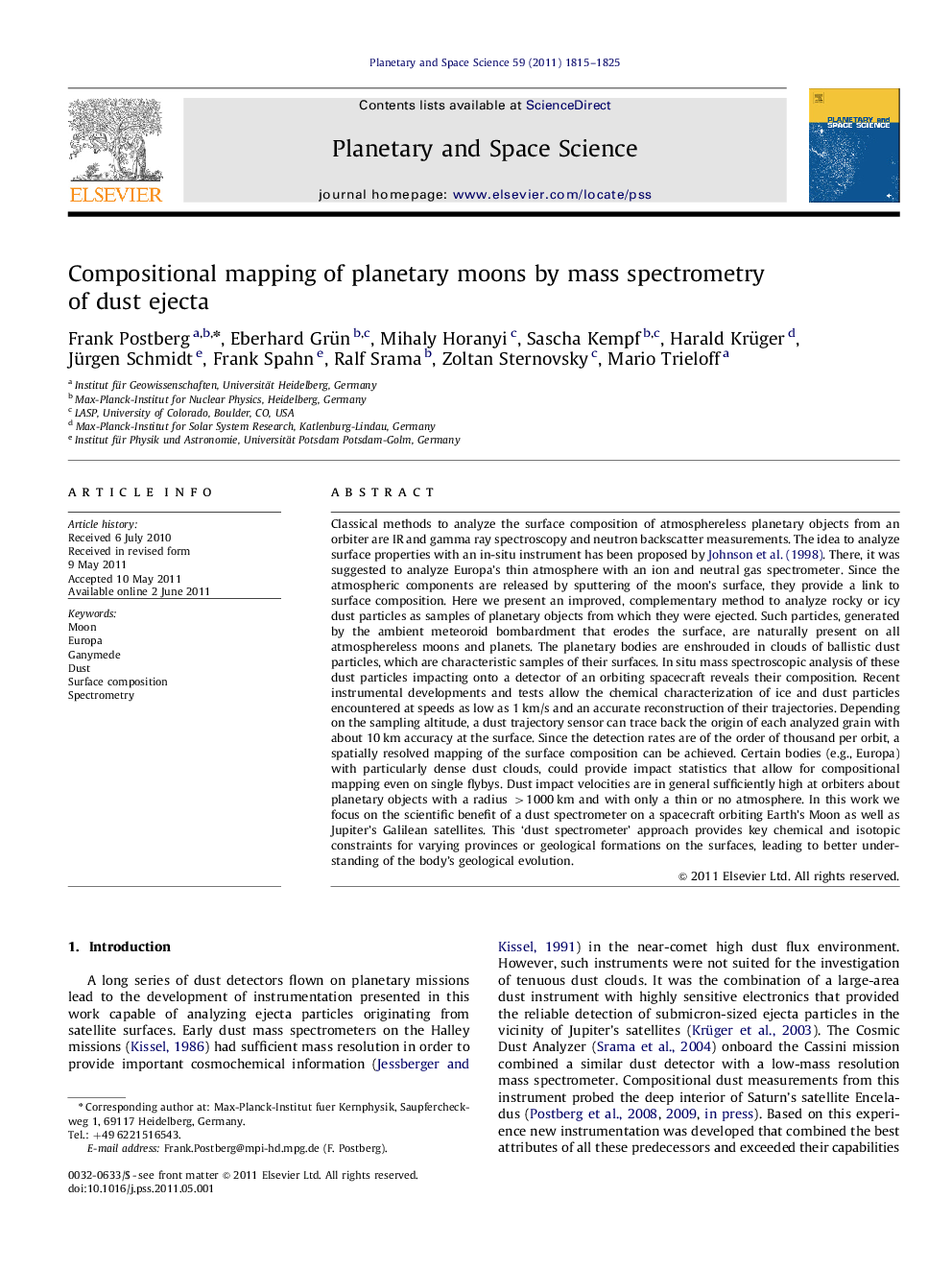| Article ID | Journal | Published Year | Pages | File Type |
|---|---|---|---|---|
| 1781634 | Planetary and Space Science | 2011 | 11 Pages |
Classical methods to analyze the surface composition of atmosphereless planetary objects from an orbiter are IR and gamma ray spectroscopy and neutron backscatter measurements. The idea to analyze surface properties with an in-situ instrument has been proposed by Johnson et al. (1998). There, it was suggested to analyze Europa's thin atmosphere with an ion and neutral gas spectrometer. Since the atmospheric components are released by sputtering of the moon's surface, they provide a link to surface composition. Here we present an improved, complementary method to analyze rocky or icy dust particles as samples of planetary objects from which they were ejected. Such particles, generated by the ambient meteoroid bombardment that erodes the surface, are naturally present on all atmosphereless moons and planets. The planetary bodies are enshrouded in clouds of ballistic dust particles, which are characteristic samples of their surfaces. In situ mass spectroscopic analysis of these dust particles impacting onto a detector of an orbiting spacecraft reveals their composition. Recent instrumental developments and tests allow the chemical characterization of ice and dust particles encountered at speeds as low as 1 km/s and an accurate reconstruction of their trajectories. Depending on the sampling altitude, a dust trajectory sensor can trace back the origin of each analyzed grain with about 10 km accuracy at the surface. Since the detection rates are of the order of thousand per orbit, a spatially resolved mapping of the surface composition can be achieved. Certain bodies (e.g., Europa) with particularly dense dust clouds, could provide impact statistics that allow for compositional mapping even on single flybys. Dust impact velocities are in general sufficiently high at orbiters about planetary objects with a radius >1000 km and with only a thin or no atmosphere. In this work we focus on the scientific benefit of a dust spectrometer on a spacecraft orbiting Earth's Moon as well as Jupiter's Galilean satellites. This ‘dust spectrometer' approach provides key chemical and isotopic constraints for varying provinces or geological formations on the surfaces, leading to better understanding of the body's geological evolution.
► Moons are enshrouded by dust lifted from micro-meteroid bombardment. ► Analyze dust particles as samples of planetary surfaces at flyby's or from orbiter. ► Dust detectors allow Time-of-Flight spectrometry and dust trajectory reconstruction. ► Compositional mapping of surfaces with ~10 km accuracy and trace compound sensitivity. ► High scientific benefit from dust spectrometers at Moon and Galilean satellites.
